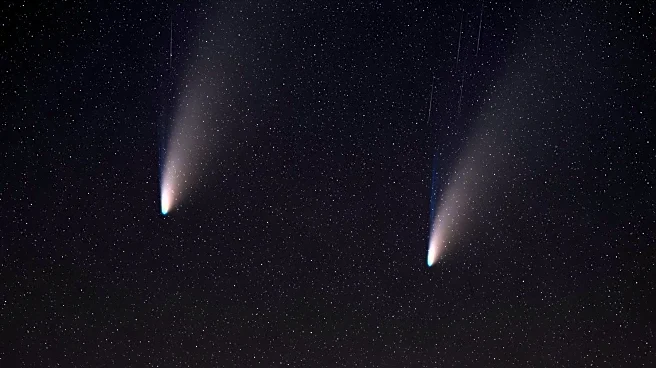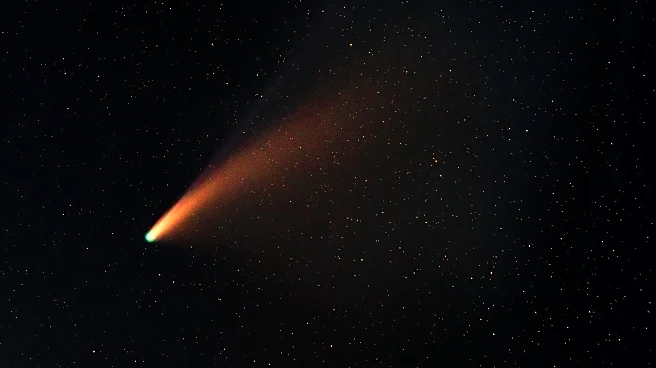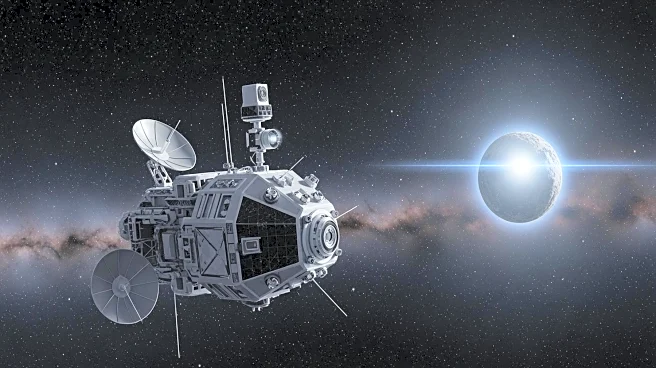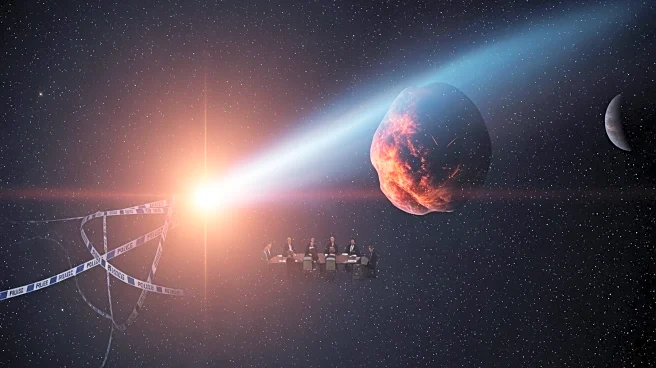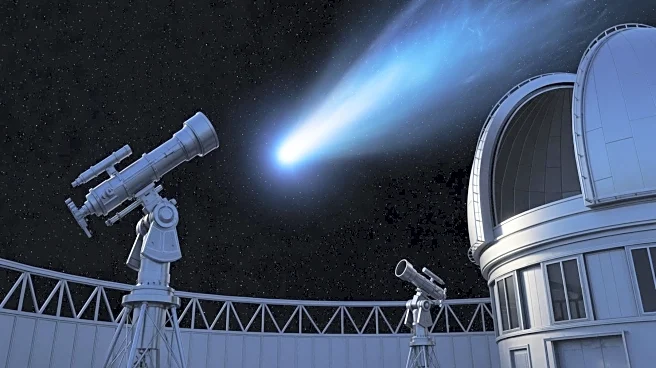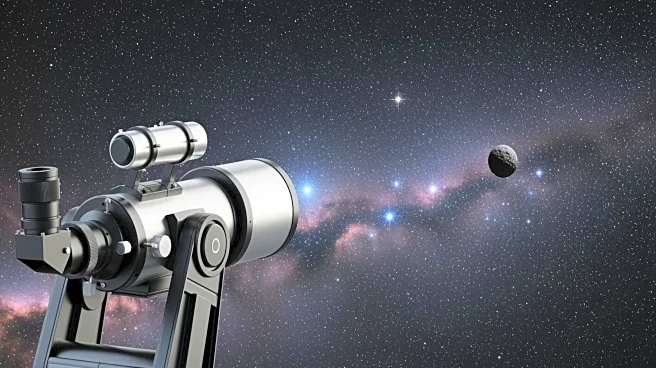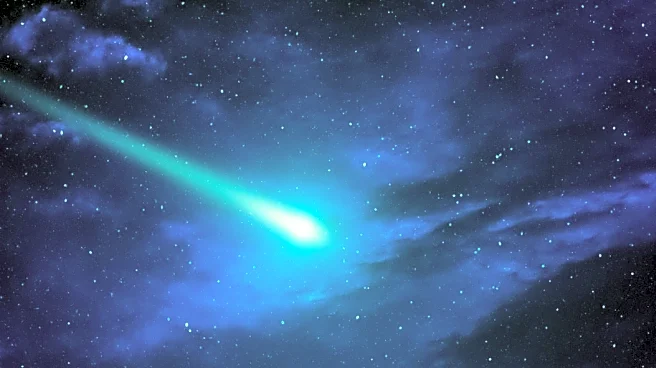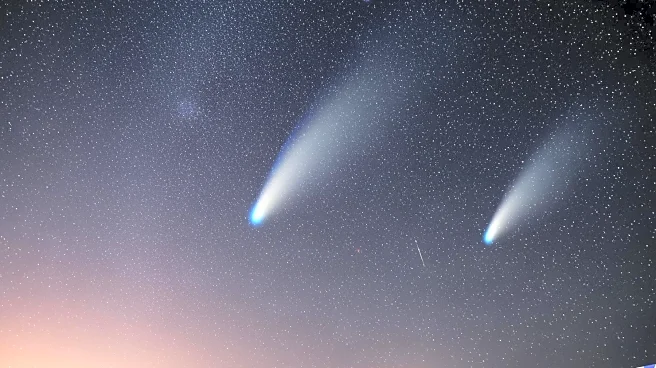What's Happening?
The interstellar comet 3I/ATLAS has been observed emitting a jet of material towards the sun, captured in a new image by the Two-meter Twin Telescope at Teide Observatory. This comet, only the third known interstellar object to pass through our solar
system, is approaching the sun for its closest encounter on October 30. The jet, composed of ice and dust, is typical of comets as they warm up near the sun. The comet will be visible in small telescopes before it moves away from the solar system.
Why It's Important?
The observation of 3I/ATLAS provides valuable data on interstellar objects, which are rare and offer insights into the composition and behavior of celestial bodies from outside our solar system. Studying such comets can enhance understanding of the materials and processes present in other star systems. This knowledge contributes to the broader field of astronomy and helps refine models of solar system formation and evolution. The visibility of the comet also presents an opportunity for amateur astronomers to observe an interstellar visitor.
What's Next?
As 3I/ATLAS approaches its closest point to the sun, astronomers will continue to monitor its activity, particularly the behavior of its jet. Further observations could reveal more about the comet's composition and the dynamics of interstellar objects. The data collected may inform future missions aimed at studying similar objects, potentially leading to new discoveries about the origins and characteristics of interstellar bodies.


